12/13/2020
The best way to improve a skill is to work at mastering associated extreme challenges. Practicing with a 44 magnum revolver makes a 357 magnum revolver’s recoil mild by comparison and easy to control. Extending shooting distances while getting in practice, beyond those anticipated within a planned application, sharpens marksmanship skills.
Extreme long range shooting provides an opportunity to sharpen marksmanship skills by amplifying the product of errors originating with a shooter and/or gear. The amplification makes it easier to isolate and analyze each problem and render appropriate solutions. Refinement of shooting skills and gear improves performance in long range competition, but improvement also carries over into hunting, recreational target shooting and competing at more moderate distances.
Would it not be terrific to have routine access to a 1,500 meter rifle range with interim 50 meter target positions…. and a truck full of ammunition? Or, if you are like me, a 1,640 yard range as metric is not my natural language. Change comes slowly to some. Twice as slow for me.
The Ruger Precision Rifle
In long range shooting, when a bullet enters a transonic zone and transitions from supersonic to subsonic velocity, it becomes destabilized. During that event, the bullet’s ballistic coefficient diminishes as the bullet begins to pitch and yaw; bullet nose moving up and down relative to the line of slight and bullet nose moving side to side relative to the line of flight respectively.
 The combination of a Ruger Precision Rifle and the 338 Lapua Magnum push the onset of the transonic zone out to 1,400 meters. The combination is a pragmatic solution to a math problem, an engineering group’s expression of what it would take to push a 250 grain bullet to 3,000 fps and with enough retained velocity to have an effective range in excess of 1,400 meters.
The combination of a Ruger Precision Rifle and the 338 Lapua Magnum push the onset of the transonic zone out to 1,400 meters. The combination is a pragmatic solution to a math problem, an engineering group’s expression of what it would take to push a 250 grain bullet to 3,000 fps and with enough retained velocity to have an effective range in excess of 1,400 meters.
Not to be typecast, the Ruger Precision Rifle is also available in: 6mm Creedmoor, 6.5 Creedmoor, 6.5 PRC, 308 Winchester, 300 Winchester Magnum, 300 PRC, as well as the 338 Lapua Magnum, so the Ruger Precision Rifle by chamber choice can be tailored to a specific application and none of them are slackers. The approximate supersonic to subsonic transition range for popular match ammunition, expressed in meters, in order of cartridges listed: 1200, 1300, 1350, 950, 1300, 1500, 1400.
The ergonomically designed Ruger Precision Rifle provides a high degree of reliable mechanical precision, while the cartridge selection provides the optimal ballistics to the shooter’s preference and for the application to be served. The subject firearm is the Ruger Precision Rifle chambered for the 338 Lapua Magnum.
Real Guns has previously evaluated Ruger Precision Rifle versions in 22 LR rimfire, 5.56 NATO, 243 Winchester, 6.5 Creedmoor, 6.5 PRC, 308 Winchester, 300 PRC. The 6.5 and 300 PRC were the most rewarding to work with because of the newness of the cartridges and the project handloading component. The 338 Lapua version, even though a mature cartridge, offered many of the same opportunities.
| Ruger Precision Rifle | |
| Manufacturer | Ruger, New Hampshire |
| Model # | 18080 |
| Type | Bolt Action 70° Lift – Inline |
| Caliber | 338 Lapua Magnum |
| Mag Capacity As Supplied | 5 Round |
| Barrel Length | 26.0″ 3/4″x24 thread |
| Rifling | 1:9.375 5R |
| Receiver Material | 4140 CM |
| Lower Magazine Halves | 7075-T6 Type III Anodized |
| Weight – Nominal | 15.2 Lbs |
| Overall Length | 42.25″ – 45.75″ |
| Folded Length | 40.35″ |
| Stock | Folding, Adj. Comb & Pull |
| Comb Height Adjustment | +0.75 |
| Comb Fore/Aft Adjustment | 3.5″ |
| Length of pull | 12″ to 16.2″ |
| Sights | None |
| Scope Mount | 30 MOA Picatinny Rail |
| Trigger – Ruger Marksman | Adj. 2.25 to 5.0 Lbs |
| Safety | Reversible, Rotating – 2 Position |
| MSRP | $2099 |
| l | |
The Ruger Precision Rifle evolution
The Precision Rifle was a mid 2015 phenomena. Introduced as a in-line recoil path, bolt-action rifle, 1,000 yard hitter, in 308 Win, 6.5 Creedmoor and 243 Win. Others followed, each differing in configuration as an accommodation to caliber.
| Date of Introduction | Caliber | Barrel Length” |
Twist Rate |
Nominal Weight Lbs |
| 2015 | 243 Winchester | 26 | 1:7.7 | 11.0 |
| 2015 | 6.5 Creedmoor | 24 | 1:8 | 10.6 |
| 2015 | 308 Winchester | 20 | 1:10 | 9.7 |
| 2017 | 5.56 NATO | 20 | 1:7 | 9.8 |
| 2018 | 338 Lapua | 26 | 1:9.375 | 15.2 |
| 2018 | 300 Winchester Magnum | 26 | 1:9 | 15.2 |
| 2019 | 6.5 PRC | 26 | 1:8 | 11.0 |
| 2019 | 300 PRC | 26 | 1:9 | 15.2 |
A mid 2016 upgrade to existing models, changed the configuration to a handguard without a Picatinny rail to provide more clearance for scopes with large objective lens bells and a wider flat for more secure bipod mounting. Additionally, a Ruger Hybrid Brake was added, along with an upgraded anodized aluminum bolt shroud.
In Mid 2017, a 5.56 NATO version was added and the an AI magazine system was adopted.
At the tail end of 2018, 338 Lapua Magnum and 300 Winchester Magnum chambers were added to the Ruger Precision Rifle line up. These models also received a heavy contour barrel with a Ruger Precision Magnum Muzzle Brake and revised handguard.
In April 2019 both 6.5 PRC and 300 PRC versions were added. Both are configured with a 26″ barrel and Magnum Muzzle Brake, however, the 6.5 PRC has a medium contour barrel versus a heavy contour for the 300 PRC.
A couple of quick points…
The Ruger Precision Rifle’s mechanical components and assemblies have previously been covered extensively and exhaustively. For anyone interested in that level of hardware detail disassembled, please see, “A Ruger Precision Rifle In 6.5 Creedmoor Part I” which addressed the barrel nut system, handguard mounting, buttstock and hinge system, receiver extension, trigger, etc. etc.
The 338 Lapua and 300 PRC versions of the Precision rifle are fitted with a heavy barrel contour, 0.875″ muzzle diameter, and a Ruger Precision® Rifle Magnum Muzzle Brake.The brake is very effective in reducing felt recoil and controlling muzzle jump and the four set screws along the top permit refining the way a specific firearm/shooter responds to muzzle rise with removal of any or all increase down force on the rifle’s muzzle. I am old, so I have been misinformed that a shooter must learn the characteristics and personality of a firearm, then learn how to adapt to shoot it well. For those who are trying to tame a firearm to conform to their personal attributes and personalities… well, here ya go.
A great source of entertainment can be found in reading social media approaches to brake removal. People are torching the brake, soaking it in hot water, using an impact wrench, etc. An alternative is to open the manual to page 18 and following the simple instructions. With the rifle checked for empty and the bolt removed and facing the front of the brake, put a large screw driver or similar through the brake vents so the brake body can be held in place. Using a 1 1/6″ open end wrench… not 7/8″ indicated in the instructions, turn the jam nut clockwise about a quarter of a turn, just enough to take the pressure off of the threads. Use the large screw driver to turn the brake assembly counterclockwise and both the brake and jam nut will come off together. How to hold the rifle while loosening the brake/jam nut assembly? My approach is to lay the rifle flat on a clean carpeted floor, sit on it at the action, and unscrew the brake. Other than some irregular surface discomfort, butt wise, no damage to the firearm. Yes, it is amazing that I can expend 300 words obsessing over issues surrounding a muzzle brake.
The 338 Lapua Magnum and 300 PRC versions of the Ruger Precision Rifle receiver rails have a 30 MOA downward cant, as opposed to the 20 MOA cant on other versions. The intent is to bias toward a raised muzzle so a scope does not run out of elevation adjustment when long range shooting. The rail is secured with 8-40 fasteners to better stand up to heavy optics under recoil.
The folding buttstock serves a number of purposes. Because this is an inline recoil rifle with an extended action and a long bolt, there must be a way to move the buttstock out of the way when removal of the bolt is required. So Ruger put it on a stout, solid locking hinge so the buttstock can be folded out of the way. The Ruger Precision Rifle accepts AR standard buttstocks and grips.
The Ruger Precision rifle’s bolt is a push feed design with three locking lugs and a 70º lift. The bolt body is one piece and, like the rifle’s receiver, CNC from pre-hardened 4140 Chrome Moly steel. Dual cocking cams provide additional mechanical advantage, which reduces cocking effort on bolt lift. The body is full diameter, the same as the circumference of the lugs, for added strength.The bolt handle has industry standard 5/16″x24 threads, permitting the use of any from a broad selection of aftermarket tactical bolt handles.
Pull length and comb height and position are adjustable by lifting up on the quick release cam levers and sliding associated surfaces to position of preference. No, “Cant Adj” is not the same as “Can’t Adj”. The pad is recoil absorbing and it can be canted, rotated, left or right 9º. All of the camming latches and QD attachment points can be swapped to the opposite side to suit preference.
Prepping for handloads
Previously working with the 338 Lapua cartridge and a bolt action rifle, the emphasis for handloads was for target work and bullets were selected accordingly. As the 338 Lapua also makes for an excellent big game cartridge, I am leaning toward working up handloads with expanding bullets suitable for hunting. The Ruger Precision Rifle’s high degree of accuracy, weight and stability make it an ideal platform for handload development. As a starting point and point of comparison…
| Best Zero Results – 338 Lapua 250 Grain Match | |||||||
| Near-Zero – yds. | 20 | Mid Range – yds. | 184 | ||||
| Far-Zero – yds. | 338 | Max Ordinate – in. | +6.0 | ||||
| Point Blank – yds. | 346 | ||||||
| Range | ||||||||||||
| Yards | 0 | 100 | 200 | 300 | 400 | 500 | 600 | 700 | 800 | 900 | 1000 | |
| Velocity – fps | 3000 | 2838 | 2681 | 2529 | 2383 | 2241 | 2105 | 1974 | 1849 | 1728 | 1613 | |
| Energy – ft.-lbs. | 4995 | 4469 | 3988 | 3550 | 3151 | 2788 | 2460 | 2164 | 1897 | 1657 | 1443 | |
| Momentum – lbs-sec | 107 | 101 | 96 | 90 | 85 | 80 | 75 | 71 | 66 | 62 | 58 | |
| Path – in. | -1.50 | 4.38 | 5.93 | 2.64 | -6.08 | -20.94 | -42.73 | -72.36 | -110.93 | -159.68 | -220.10 | |
| Drift – in. | 0.00 | 0.00 | 0.00 | 0.00 | 0.00 | 0.00 | 0.00 | 0.00 | 0.00 | 0.00 | 0.00 | |
| Time Of Flight – sec. | 0.00 | 0.10 | 0.21 | 0.33 | 0.45 | 0.58 | 0.72 | 0.86 | 1.02 | 1.19 | 1.37 | |
| Best Zero Results – 338 Winchester Mag 250 Grain | |||||||
| Near-Zero – yds. | 18 | Mid Range – yds. | 160 | ||||
| Far-Zero – yds. | 293 | Max Ordinate – in. | +6.0 | ||||
| Point Blank – yds. | 300 | ||||||
| Range | ||||||||||||
| Yards | 0 | 100 | 200 | 300 | 400 | 500 | 600 | 700 | 800 | 900 | 1000 | |
| Velocity – fps | 2660 | 2460 | 2270 | 2088 | 1916 | 1753 | 1599 | 1460 | 1334 | 1227 | 1138 | |
| Energy – ft.-lbs. | 3927 | 3359 | 2859 | 2421 | 2038 | 1705 | 1419 | 1183 | 988 | 835 | 719 | |
| Momentum – lbs-sec | 95 | 88 | 81 | 75 | 68 | 63 | 57 | 52 | 48 | 44 | 41 | |
| Path – in. | -1.50 | 4.87 | 5.48 | -0.66 | -14.80 | -38.43 | -73.42 | -122.03 | -186.98 | -271.50 | -379.15 | |
| Drift – in. | 0.00 | 0.00 | 0.00 | 0.00 | 0.00 | 0.00 | 0.00 | 0.00 | 0.00 | 0.00 | 0.00 | |
| Time Of Flight – sec. | 0.00 | 0.12 | 0.24 | 0.38 | 0.53 | 0.70 | 0.88 | 1.07 | 1.29 | 1.52 | 1.78 | |
A note on the ethics of long range hunting…
In 2019, J.C. Jarrell set the light Bench Rest 1,000 yard world record, 5 shots in the bullseye, a 2.83″ group. The following weekend, Jarrell put 10 shots inside of 6″, 6 of them inside 3″. Some time ago, I took a shot at a huge buck, 500 yards out… which turned out to be a relatively small deer at a much closer 275 yards. I was young, it was cold, I was hungry. I’ve since become much better at judging distances… and deer.
I do not know Jarrell… I don’t know a lot of people, but if he and I were in Alaska during hunting season, and stumbled on a herd of Caribou 600 yards out, I would not want to take a shot because I am not a skilled shooter at those ranges and I would not want to expend ammunition on a miss, or wounding an animal. Jarrell would have the credentials to attempt such a shot, I would not. In my opinion, it would be ethical for him to take the shot, it would be less than ethical for me.
The folks who burst into tears at the mention of a 300 plus yard shot, probably do not have the skill to take a 200 yard shot and are trying to judge all others by their level of limited competency. Often the same folks who pat the hide of a downed deer and thank it for giving itself up as food. Which is, of course, very silly because the deer did not volunteer to provide the hunter with a meal. If the deer could talk he would be cussing himself for being too slow to flee and would be telling our grateful hunter, “%##@&!!!”.
In summation, if a hunter has made his bones putting 5 shots into a 2.83″ group at 1,000 yards, he can make his decision to take a long shot within his range of competency. If you are like me, stick to smaller deer and shorter distances and lie like a rug when you tell the “longest shot” story.
The 338 Lapua in context… Which distortion of history would you like?
Yes, the 338 Lapua cartridge is a product of military origins, as are the 45-70 Government, 30-40 Krag, 30-06 Springfield, 308 Winchester, 5.56 NATO disguised as the 223 Remington, etc., etc.. They are all cartridges that have all been used for sniping, automatic weapons of the day and for general issue small arms, however, all have also made the successful transition to civilian applications.
As a young man, the 338 Winchester was the round that was too heavy for deer, but just about right for elk and big bear. It was also quickly discounted for use on any lesser game and slapped with the label of too hard of a kicker for most. Oddly enough it is still described in such a fashion. The 338 Winchester is based on a shortened and necked down version of the 375 H&H.
The 340 Weatherby is consistent with Roy Weatherby’s “more is always better” approach in that it is based upon a full length 375 H&H. Perhaps because it was affixed to the expensive Weatherby Mark V it never really achieved rock star status. It was chambered in the Mark V Sporter, a really good package for under $1,600, but ammunition is expensive, even for the reloader and velocity is only 100 – 125 fps greater than the 338 Winchester Magnum.
The 338 Lapua is based on a shortened version of the 416 Rigby. While the case head is 0.007″ larger in diameter than the Weatherby body above the belt, it is also 0.200″ approximately shorter than the 416 Rigby, which surrendered a good deal of powder capacity.
The 338 Remington Ultra Mag was, unfortunately, a part of a very high performance group of then new cartridges which included the 7mm Ultra Mag, 300 Ultra Mag, 338 Ultra Mag, and the 375 Ultra Mag. They were introduced just as Winchester was convincing the gun buying public that short was better. The 338 RUM is a terrific cartridge. I’ve owned them as a heavy barrel target rifle and as a shop built sporter on a Remington 700 action. The big down side is action length required and the lack of room for heavy bullets without surrendering case capacity.
The 338-378 Weatherby is a bucket full of smokeless powder and able to propel a heavy 300 grain bullet in a convincing fashion. I found shooting my Weatherby Accumark… invigorating and it remained so for the ten years it was actively put to work. It just seemed there was more work that could be done with 137 grains of powder held by each round.
My point is, don’t get caught up in the “What are you going to do with that ginormous 338 Lapua? It is meant for use as artillery and dinosaur culling!…!!” Is not. It is a moderate selection for perforating at 1,000 yards.
| 338 Magnum Cartridge Comparison |
Date of Origin | Bullet Diameter “ | Case Capacity H2O |
SAAMI Pressure KPSI | Parent Case |
| 338 Winchester Magnum | 1958 | 0.338 | 86 | 64.0 | 375 H&H |
| 340 Weatherby Magnum | 1962 | 0.338 | 100 | 62.5 | 375 H&H |
| 338 Lapua Magnum | 1983 | 0.338 | 108 | 65.0 | 416 Rigby |
| 338 Remington Ultra Magnum | 2002 | 0.338 | 110 | 65.0 | 404 Jeffery |
| 338-378 Weatherby Magnum | 1999 | 0.338 | 137 | 63.8 | 378 Weatherby |
| *CIP registration 4400 bar |
|||||
An now, a short brake
Yes, I know “break”. So some bullets will be selected, powder will be sought and primers will be secured. Hopefully, they will play nice together and some handload data will be the result. I like the hardware. It is beefy, aesthetically pleasing and well done on assembly. If I am bouncing around, I apologize. I am not a long range shooter by inclination, but there is a potential even for me with the Ruger Precision Rifle and I am trying to decide which version.
It might be that it is a rifle that is good for handload development; consistently accurate so one less variable in the process to worry about. It could be a challenge for me to engage long range shooting, to learn more about the influence of nature on shots at a distance; wind, temperature, varied elevation, and the dogged persistence of gravity. So I am writing, but mostly thinking aloud. Be back soon.

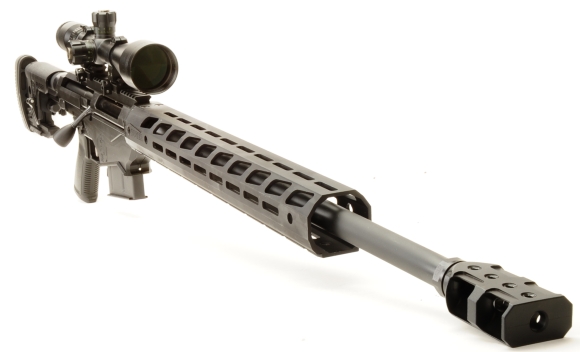
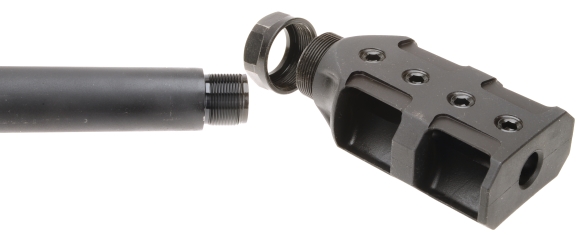
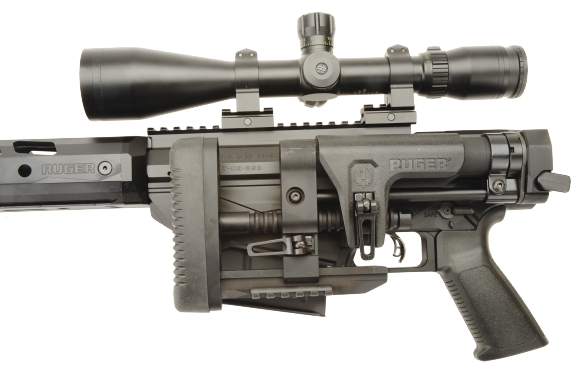
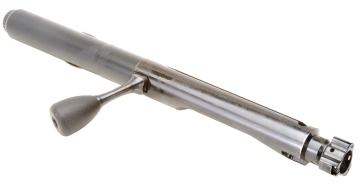
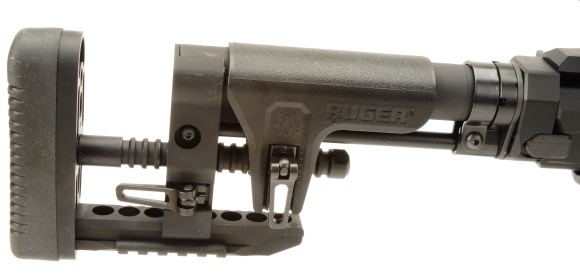
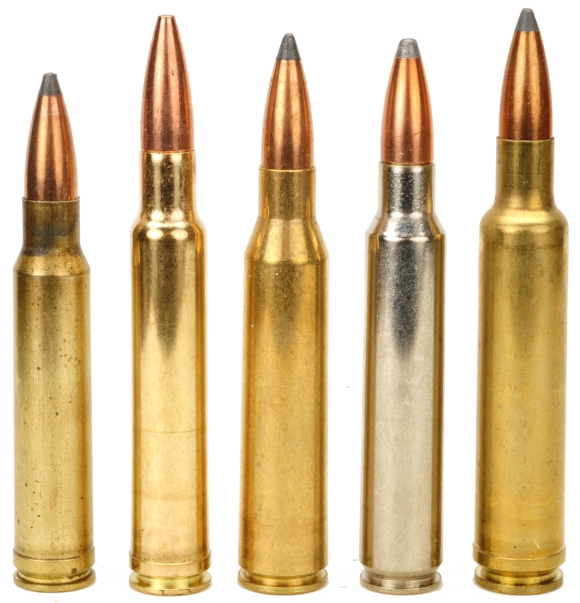
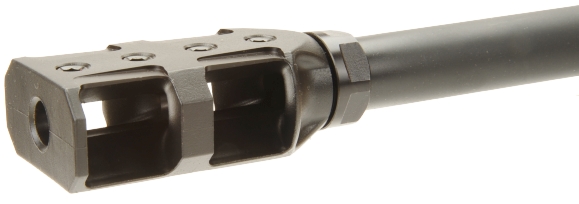
Email Notification